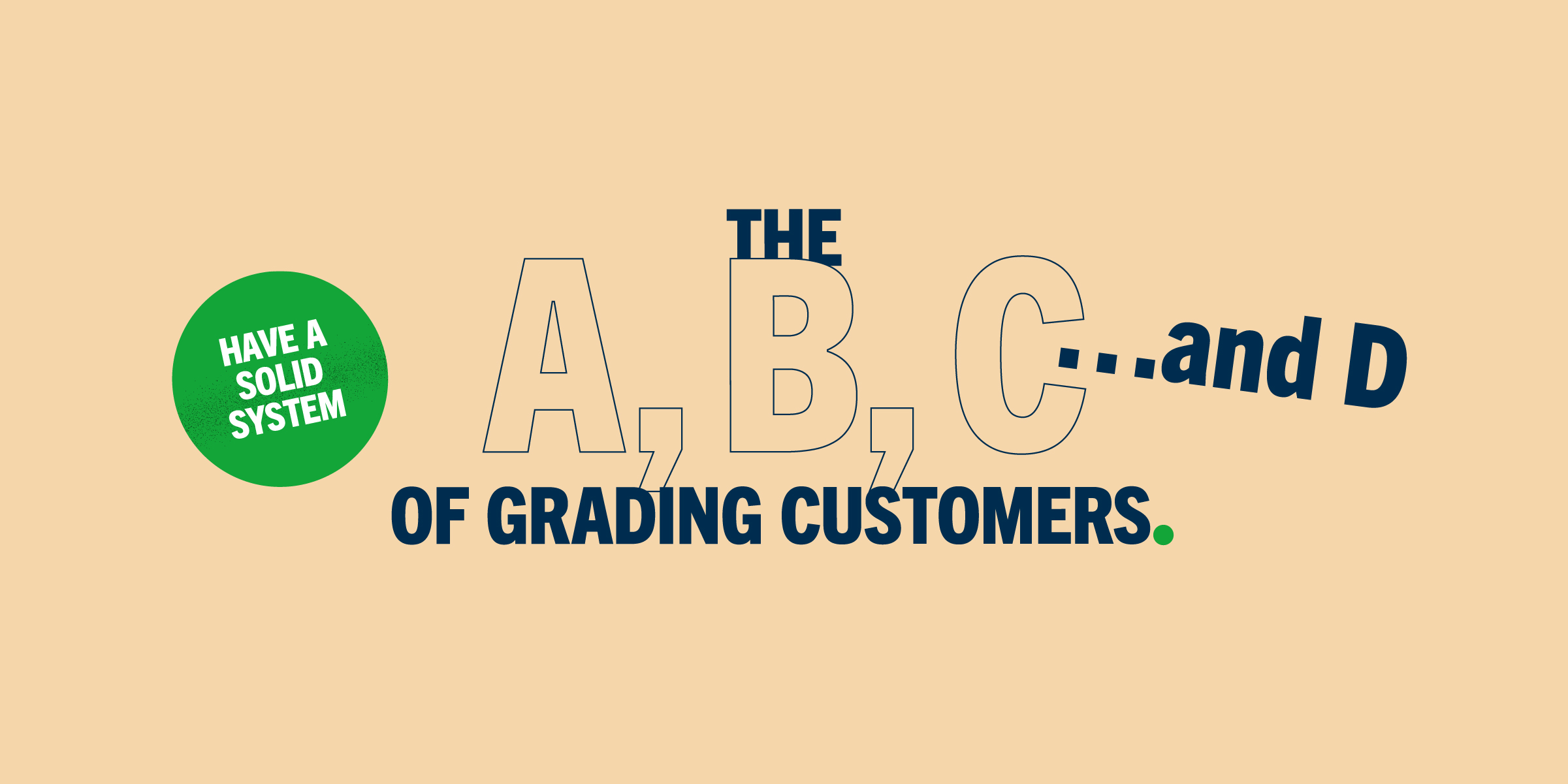


31 October 2019
Let’s be honest. Some customers are better than others. Great customers listen to you, pay you and recommend you. Not-so-great customers slow you down, stress you out and damage your reputation. But how do you spot who’s who, before it’s too late?
When it comes to taking on new work, it really does pay to be picky – and when it comes to avoiding tricky customers, there are some whopping great warning signs…
You know how it goes. A complete stranger calls you out of the blue and asks you to quote for a job. It’s a new lead – great. But you’ve no idea whether you’ve just stumbled across a dream customer or you’re on a slippery slope towards the job from hell.
You’ve got one chance to work it out – the pricing-up visit. So, before you head out with your tape measure, grab a quick heads up and find out if you’ve got an A, B, C or D grade customer on your hands…
These guys are golden. They’re easy to work with, they’re happy with your prices and they pay on time. Even better, they come back again and again, regularly recommend you to friends and spend a good chunk of money with you every year. So how do you spot one early on?
Ok, so not everyone’s perfect, but Grade Bs are still good customers. They might be a bit more price conscious, or not spend as much with you, but they still pay on time, every time. You’ll know you’ve got one because…
Now we’re getting into trickier territory. Grade C customers bring a whole lot of headaches to the job and, once you’re all done, you’ll probably have to chase them to pay up too. Brilliant. You’ll spot them because…
These guys should come with big red flashing lights over their heads, because they’re a disaster area. They’re the kind of people you’ll wish you never started working with – treating you and your team badly, complaining about your work and prices, wasting your time and damaging your reputation. And guess what? They won’t pay on time either. Don’t miss the early warning signs…
Ok, so you’ve worked out how to spot the great customers from the terrible ones – now what? Well, first things first, remember: you don’t have to say yes to every job. If you spot those danger signs, take a moment to think. What’s it going to be like working with these people?
Because here’s the thing. If they’re a grade C or a grade D, it’s going to be rough. You’re going to be tearing your hair out, ranting in the van and short changed at the end of it. Even worse, when a great customer comes along, you might just be too busy to help.
On the other hand, if you only say yes to customers you really want to work with, you’ll be taking control of your business – and feeling better about getting your boots on each morning.
So, it pays to be picky. As the saying goes, 80% of your work comes from 20% of your customers. So if every customer recommends another customer who’s the same grade as they are, you really want to look after those As and Bs.
Chances are, grade A customers have more budget to play with, more projects in the pipeline and more great friends they’ll be happy to send your way. Putting the majority of your effort into looking after them will boost your business, your reputation and probably your sanity.
On the flipside, trying to please those Cs and Ds is a losing battle – and if you ever actually manage it, all you’ll get is more work from them and their C and D friends!
But how do you make sure your best customers are happy? Well, treat them like you’d want to be treated. Simple. Keep them in the loop, get back to them quickly and quote fast – the templates in YourTradebase can help speed things up.
Then be friendly, show up and do the great work you really want to do. Recognise them as important to your business and, if they’re regulars, try to prioritise them when you can.
It’s even worth thinking about giving gifts at the end of a job, just to say thanks for working with you. A bunch of flowers or a bottle of wine to enjoy in their new kitchen might set you back a tenner, but it’s the kind of thing people will remember. If that tenner helps you earn the next big job, it’s a pretty good investment too.
It doesn’t hurt to say thanks for choosing you, with a quick, friendly email like this:
Hi [name]
I just wanted to say thanks for paying the invoice for your [job name] (reference [number]).
I’ve attached a receipt for your records.
It was great working with you. I hope we can help with another project soon.
Thanks again
[Name]
Shrugging off difficult customers might come less easily, especially if you don’t get used to spotting them, or you’re just a nice person who finds it tricky to take a tough stance. But nobody’s going to do it for you, and you’ll be glad you did. Without the headaches these guys bring, you’ll be happier and less stressed – with much more time for those business-boosting As and Bs.
So how do you do it? Well, if you’re seeing the warning signs before you’ve committed to a job, just say you’re busy. You don’t have to be unpleasant or not respond – just stand your ground. Reply quickly, in a friendly, confident way, saying that unfortunately you’re busy. Job done. And if they do try to persuade you, just say no, whether you’re really busy or not.
Here’s the kind of email you could send…
Dear [name]
Thanks for asking us to take a look at your [kitchen / garden etc] job.
We’d love to help but unfortunately we’re really busy at the moment and we don’t think we can give it the time it needs.
We hope you find someone to help out. Good luck with the project.
All the best
[Name]
If work’s dried up and you really feel you need to take on a grade C customer, be careful. Only do it if they pay up front or in scheduled amounts. Never offer them a discount – and even consider putting in a higher price to make up for any potential headaches and extra demands.
Have a clear set of terms and conditions and send it to them with your quote, then get them to sign off on what they want, agree any later changes in writing and document any areas at risk of damage or already damaged before you start.
Keep track of your email and text conversations and check in with them regularly to manage their expectations. We’ve got a handy conversation tracker in YourTradebase and we’ve written a blog about weekly catch-up emails for those longer jobs. There are lots more troubleshooting tips in our Tricky Customer Toolkit too.
If a job does turn difficult, try to keep things friendly, talk in person and do what you need to do to make the customer happy – think of it as an investment in your reputation – then walk away and make sure you’re never available to work with them again.
And those Ds? Don’t touch them even if you’re quiet – by the time they’ve finished moaning about you, you might just be even quieter!
One quick, easy app that frees you from paperwork and lets you get back to the job you love.
No fuss. No strings. No credit card needed.